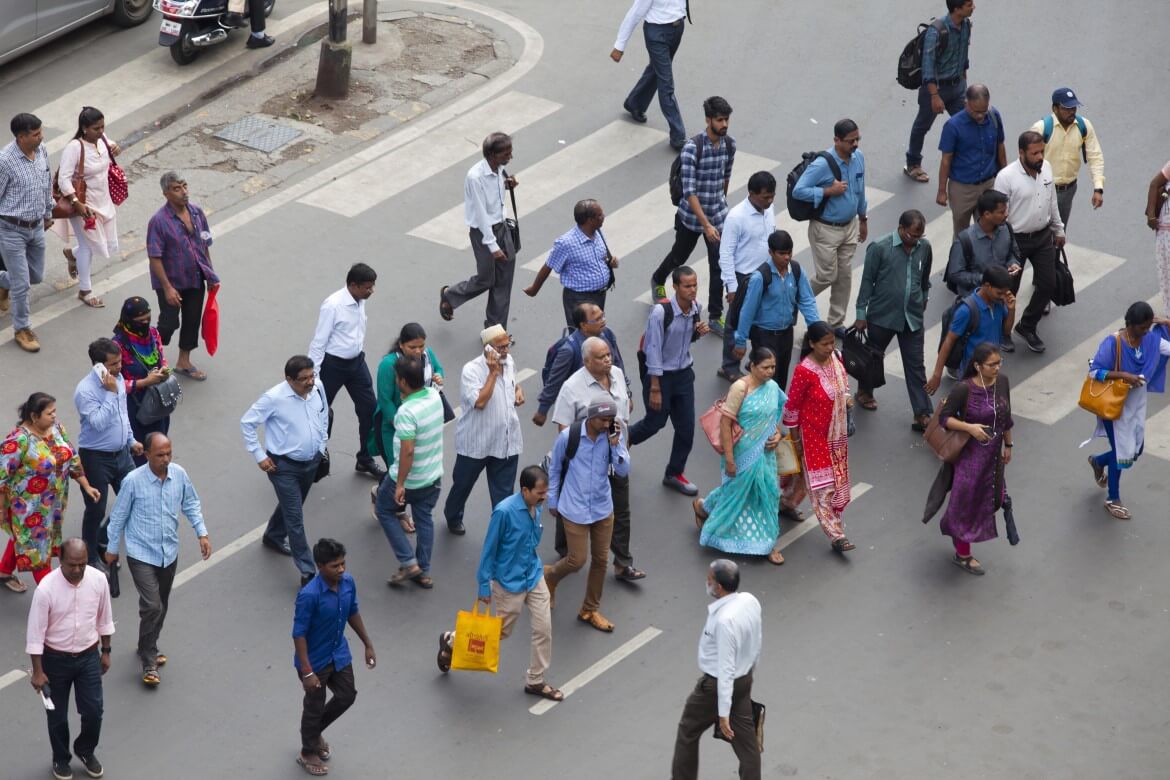Moving Towards Sustainable Urban Mobility for All

India is projected to overtake China as the world’s most populous country in 2023. As the population practically doubles, cities are under extreme stress to ensure the provision of education, employment, and basic services.
A critical aspect of meeting these requirements is ensuring equitable access to existing opportunities and services that are often scattered across a city. An affordable, efficient and extensive urban mobility network can play a vital role in bridging this gap. The Indian transport sector is responsible for 13.5 percent of India’s energy-related emissions, with road transport accounting for 90 percent of the sector’s energy consumption. Accessible public transport, coupled with a focus on road safety, is also the key to decarbonizing Indian cities.
Given this context, we were delighted to get the opportunity to participate in the recent Urban Mobility India (UMI) Conference and Expo 2022. The annual flagship event by the Ministry of Housing and Urban Affairs (MoHUA) was held in Kochi from November 4 to November 6, 2022. WRI India experts participated in three sessions at the conference - Planning for Bus-Based Public Transport, Sustainable Public-Private Partnership in Bus Transport and Multimodal Integration. WRI India, in partnership with the Institute for Transportation and Development Policy (ITDP) India, also hosted the session, Streets for All, under the Bloomberg Philanthropies Initiative for Global Road Safety.

KEY TAKEAWAYS FROM THE UMI EXPERIENCE
1. Planning for Bus-based Public Transport

The backbone of urban mobility, public transport is beset by inefficient planning and a lack of finances that impacts both ridership and revenue. Almost 13 crore people in the country take the bus every day. While the current outlay of buses across cities is only 60,000, there is a requirement for at least 132,000 public buses to meet the rising demand.
There are several bottlenecks in the ecosystem that need to be addressed. These include setting service-level benchmarks to monitor and assess performance on a systematic basis and making timely improvements. A centralized database, integrated with the Smart City initiative, will help track the life cycle of a bus in its entirety and look at maintenance in the long term. A conducive market for private operators with payment security mechanisms and capacity-building would be crucial. Automatic fare collection will help make the system more user-friendly and create a robust database.
Heavy taxation forces operators to seek grants from the state or central government for even minor service improvements as they lack the surplus capital for systemic improvements. Existing bus schemes need to explore exempting taxes to improve services. While the Gross Cost Contract (GCC) model, where operations are outsourced to a private operator while transit agencies plan and manage services, is ideal for service delivery, transit agencies with existing staff can also consider dry leasing as a transitional strategy.
2. Public-Private Partnership (PPP) in Scaling Bus Transport

The Public-Private Partnerships (PPP) model can be adopted by cities that lack technical and financial resources for operating buses by enabling them to leverage private resources and expertise.
The recent success of the CESL-led Grand Challenge, aimed at procuring 5,450 electric buses, and the National Electric Bus Program (NEBP) adding 50,000 electric buses, makes this the opportune time to consider the PPP model. By 2030, Indian cities will need to invest at least INR 7.5 lakh crore to meet bus transport demand (WRI India estimates). Authorities must also look at addressing the quality of buses, training professionals in the sector, increasing the role of technology in decision-making and bridging the gap between costs and revenue.
3. Multimodal Integration for Seamless Commute

Mass transit, coupled with reliable and convenient first- and last-mile connectivity, can reshape the urban commute.
As India plans on building 5,000 km of urban metro rail infrastructure in the next 25 years, metro agencies also need to plan on adding services that enable access to public transport, walking, and cycling, around the station area. Employment density is strongly associated with transit ridership. Building spaces with higher job densities around the metro lines can increase both ridership and access to economic opportunities.
WRI India’s preliminary analysis in Mumbai considers the average number of jobs per kilometer along the western suburban railway line and assumes a similar number of jobs to be accommodated along Metro lines 2A and 7. The result shows that an additional 1.1 million jobs could be created in these areas alone.

Streets for All
City streets need to prioritize the movement of both vehicles and people. While several Indian cities have initiated such pilot transformations, scaling these solutions is the need of the hour.
This can be achieved by city master plans that integrate walking and cycling paths. Government institutions must also consider building in-house capacity by bringing in architects, urban designers and traffic engineers to design safer and smarter infrastructure.

Sustainable and equitable urban mobility for our growing cities will require stronger implementation, robust monitoring mechanisms, leveraging of the right technology to scale-up design solutions and increased investments to extend first- and last-mile connectivity.
Views are personal.
